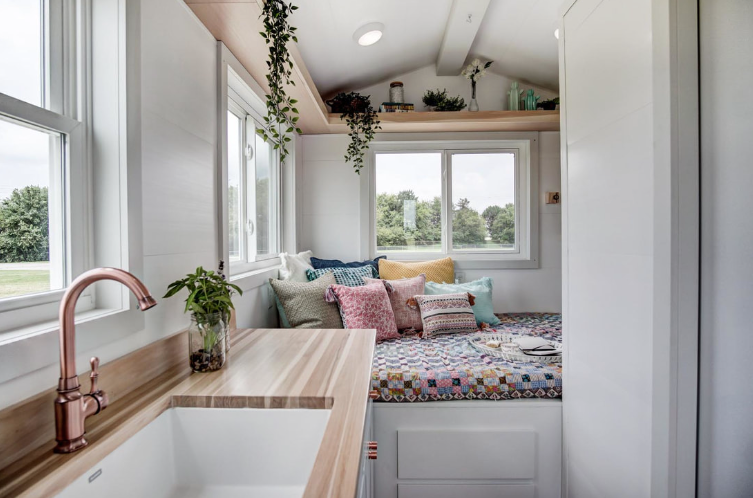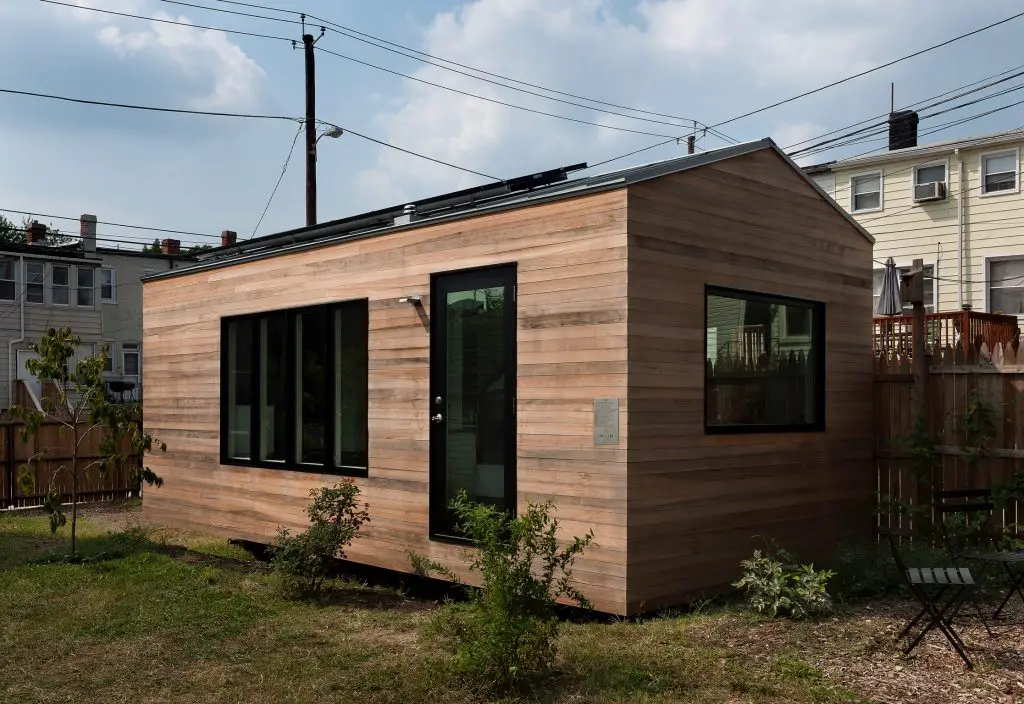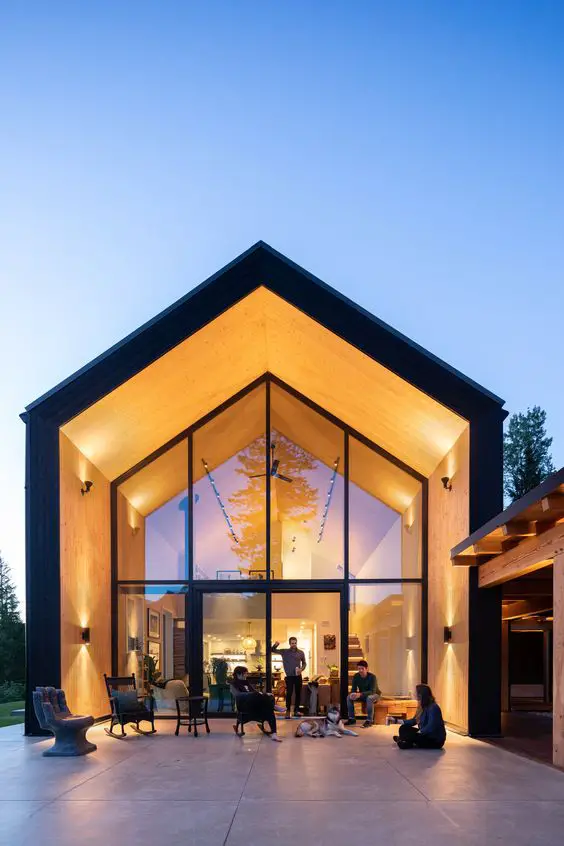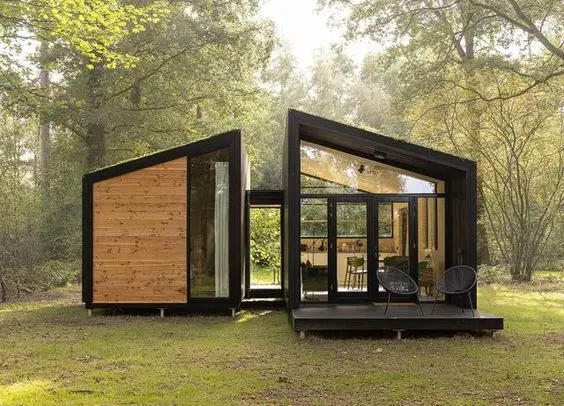Spread the love !
In a world where bigger often seems better, there’s a quiet revolution taking place, one that’s all about living large in a smaller space.
Tiny houses have captured the hearts and minds of people looking for something different, more sustainable, and affordable.
If you’re here to discover the ins and outs of tiny house living, you’re in the right place.
Tiny vs. Traditional: The Showdown
Picture this: a tiny house on wheels or a spacious suburban mansion? It’s a classic showdown, and you’re the referee. We’re diving into comparative analysis, where you’ll see how tiny houses measure up against their larger counterparts. It’s not just about dollars and cents; it’s about the lifestyle choices that come with them.
In the realm of housing, two contrasting philosophies have emerged in recent years: tiny houses and traditional houses. Each represents a unique approach to living and differs in many aspects. Let’s dive into a comparative analysis to understand better the strengths and trade-offs of these two housing options:
1. Size and Space:
● Tiny Houses: The defining characteristic of tiny houses is their compact size, typically ranging from 100 to 400 square feet. This limited space encourages minimalist living with a focus on essentials. It’s a lifestyle that promotes decluttering and prioritizing experiences over possessions.
● Traditional Houses: Traditional houses are significantly larger, often spanning thousands of square feet. They provide ample space for various rooms, oversized furniture, and storage, accommodating families and lifestyles requiring more room to spread out.
2. Cost:
● Tiny Houses: One of the main attractions of tiny houses is their affordability. Smaller size means reduced construction costs, lower utility bills, and often lower property taxes. It’s an appealing option for those seeking financial freedom and simplicity.
● Traditional Houses: Traditional homes are typically more expensive to build, maintain, and heat or cool due to their larger size. Property taxes and insurance costs can also be higher.
3. Environmental Impact:
● Tiny Houses: Tiny houses are renowned for their minimal environmental footprint. They use fewer construction resources and require less heating and cooling energy. Many tiny house owners opt for sustainable and off-grid living solutions.
● Traditional Houses: Larger homes generally consume more resources in construction and maintenance. However, some conventional houses are designed with eco-friendly features, and homeowners can take steps to reduce their environmental impact.
4. Customization:
● Tiny Houses: Customization is a significant advantage of tiny houses. Owners can design tiny homes to suit their unique needs and preferences, often resulting in creative and innovative interior layouts.
● Traditional Houses: Traditional homes offer more space for customization and room layout options. Homeowners can personalize their homes with various architectural styles and amenities.
5. Mobility:
● Tiny Houses: Many tiny houses are on wheels, allowing for mobility and the ability to change locations. This flexibility appeals to those who seek adventure or wish to avoid a permanent commitment to a specific place.
● Traditional Houses: Traditional homes are firmly rooted in one location, making relocation more complex and costly.
6. Lifestyle and Community:
● Tiny Houses: Tiny house living often fosters a sense of community, especially in tiny house villages or communities. It’s a lifestyle choice that can lead to more intentional living and stronger connections with neighbors.
● Traditional Houses: Traditional homes can offer more privacy and space, making them suitable for larger families or those who prefer solitude.
In conclusion, choosing between a tiny house and a traditional house ultimately depends on individual preferences, values, and lifestyle. Tiny houses are a testament to the idea that less can be more, offering financial freedom and sustainable living. On the other hand, traditional houses provide ample space and customization options but often come with higher costs and environmental impacts. The decision should align with your priorities and how you envision your living space shaping your life.
The Dollars and Cents of Construction
Are you building your dream tiny house from scratch? That’s a thrilling adventure, and we’re here to help you chart your course. It’s time to talk about construction costs, from the foundation to the roof and every little detail in between. Are you up for the challenge? We’ve got the roadmap.
To find accurate and up-to-date costing information for tiny houses today, consider exploring the following resources:
1. Tiny House Builders’ Websites: Many tiny house builders provide pricing information and details about their models on their websites. Examples include Tumbleweed Tiny House Company, Tiny Heirloom, and New Frontier Tiny Homes.
2. Real Estate Listings: Websites like Zillow, Realtor.com, and Tiny House Listings feature tiny houses for sale, often with listed prices. These listings can show you the current market prices in different locations.
3. Tiny House Forums and Communities: Online forums and social media groups dedicated to enthusiasts often discuss tiny house costs. Websites like Tiny House Talk and Tiny House Community can be valuable sources of information.
4. Tiny House Workshops and Events: Attend tiny house workshops, festivals, or events in your area. These gatherings often feature tiny housebuilders and vendors who can provide pricing information.
5. Local Builders: Contact tiny house builders for personalized quotes and pricing information. They can provide insights into regional pricing variations.
6. Tiny House Shows and TV Programs: Shows like “Tiny House Nation” or “Tiny House, Big Living” sometimes provide cost breakdowns for the featured tiny houses. Remember that these costs may reflect something other than current market conditions in your area.
7. Tiny House Books and Magazines: Books and magazines dedicated to tiny house living often include information about costs, financing, and resources for building or buying tiny homes.
8. Online Classifieds: Check online classified platforms like Craigslist, Facebook Marketplace, and Tiny House Marketplace for listings and prices of tiny houses available for sale.
9. Real Estate Agents: Some agents specialize in tiny houses or alternative housing options. They can help you find available properties and provide pricing details.
10. Tiny House Builders’ Consultations: Reach out to tiny house builders for consultations. They can provide customized cost estimates based on your specific requirements and preferences.
Remember that the cost of a tiny house can vary widely based on factors such as location, size, customizations, and materials used. Gathering information from multiple sources and consulting with professionals in the field to get the most accurate and relevant pricing details for your specific situation is essential.
Personalizing Your Tiny Haven
Tiny houses may be small, but they’re big on character. Do you want to add a touch of your personality to your compact castle? Here’s where the magic happens. We’ll explore how design choices and customizations can elevate your tiny haven, and yes, we’ll chat about how these choices might affect your wallet.
Moreover, tiny living isn’t just about saving space; it’s about saving the planet, too. For the eco-conscious, tiny houses offer a chance to live more sustainably. We’ll delve into the costs of green building practices, renewable energy systems, and what it takes to live off the grid.
Location, Location, Location
When it comes to real estate, location matters—a lot, tiny houses are no exception. Depending on where you park your tiny abode, you could be in for vastly different costs. From urban settings to rural retreats, we’ll uncover how geography plays a role in the world of tiny living.
Financing Your Dream
Ready to crunch some numbers? We’ve got you covered for those who seek the financial side of tiny living. Learn about financing options, grants, and the potential return on investment in tiny houses. It’s a journey into the world of dollars and sense.
Financing a tiny house and understanding the potential return on investment can vary depending on several factors, including location, size, and personal circumstances. Here’s an overview of financing options, possible grants, and considerations for return on investment (ROI) when it comes to tiny houses:
Financing Options:
1. Personal Savings: Using your savings is one of the most straightforward ways to finance a tiny house. This option allows you to avoid interest and debt but may require time to save significantly.
2. Tiny House Loans: Some banks and credit unions offer loans tailored to tiny house purchases. These loans may have lower interest rates than personal loans, making them a viable option for financing.
3. Home Equity Line of Credit (HELOC): If you own a traditional home, you could fund your tiny house project using a HELOC. This allows you to borrow against the equity in your current property.
4. RV Loans: If your tiny house is built on wheels and meets specific RV standards, you may qualify for an RV loan with competitive interest rates.
5. Personal Loans: Unsecured personal loans can be used to finance a tiny house, but they often come with higher interest rates than specialized ones.
6. Peer-to-Peer Lending: Online peer-to-peer lending platforms may offer options for securing loans from individuals or investors.
7. Owner Financing: Some tiny house builders or sellers offer owner financing, allowing you to pay them directly over time.
Grants and Financial Assistance:
1. Community Development Block Grants (CDBG): Some local governments offer CDBG funds to support affordable housing initiatives, including tiny house projects. Check with your municipality for potential grants.
2. Nonprofit Organizations: Certain nonprofit organizations, like Habitat for Humanity or local housing nonprofits, may offer financial assistance or grants for tiny house projects focusing on affordable housing.
3. Scholarships and Contests: Watch for tiny house design/build contests and scholarships. Some of these competitions offer financial rewards or assistance to winners.
4. Green Building and Sustainability Grants: If your tiny house incorporates eco-friendly features, you might be eligible for grants related to sustainable living and green building practices.
Return on Investment (ROI) Considerations:
1. Resale Value: While tiny houses tend to hold their value well, it’s essential to consider the resale potential. Location, condition, and market demand can influence your ability to sell your tiny house.
2. Rental Income: Renting out your tiny house can generate passive income, potentially covering your investment costs over time.
3. Savings on Living Expenses: Living in a tiny house often reduces monthly expenses, including lower utility bills, property taxes, and maintenance costs. These savings can contribute to your overall ROI.
4. Lifestyle Benefits: Remember that the ROI of a tiny house isn’t solely financial. Many people value the benefits of simplified living, reduced stress, and a smaller environmental footprint.
5. Location Matters: The location of your tiny house can significantly impact its ROI. Research areas with solid demand for tiny house living, as this can affect both rental income potential and resale value.
Before committing to financing a tiny house, carefully assess your financial situation, research potential grants, and consider the long-term financial implications. Remember that various factors can influence ROI, including the local housing market and your preferences and goals.
Navigating the Legal Labyrinth
Tiny house enthusiasts, beware! The path to small living isn’t just a walk in the park; it’s a trek through a legal jungle. From permits to inspections, we’ll guide you through the maze of regulations and codes so that you can build and live in harmony with the law.
We’ve only scratched the surface in this grand journey through the tiny house universe. The world of tiny houses is filled with wonders, challenges, and opportunities. We’re your guide whether you seek affordability, sustainability, or a unique sense of community. So, fasten your seatbelt because we’re about to embark on an exciting adventure into tiny house living throughout our blog!





